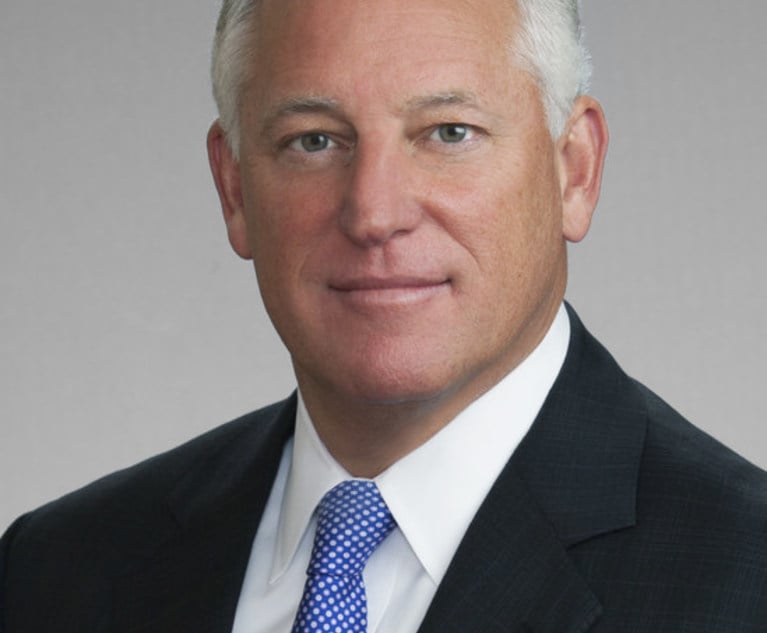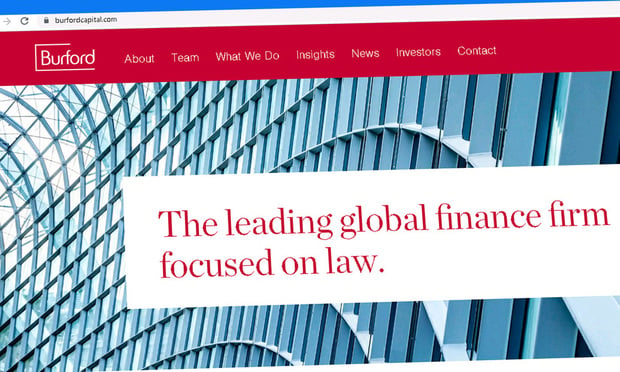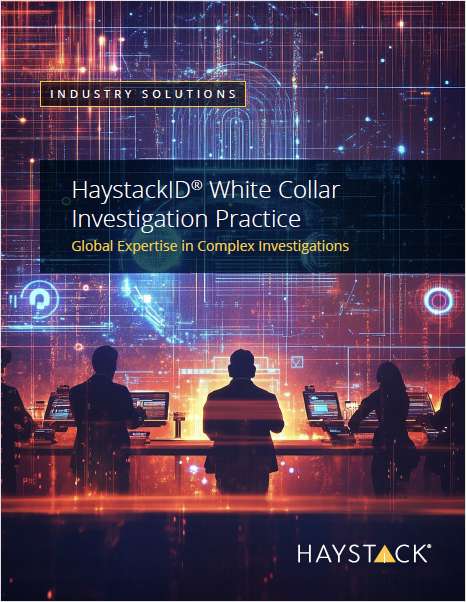Allegations Against Burford Could Muddy the Waters for Litigation Funding, Law Experts Argue
Some legal experts argue the litigation funding industry is poised for change after the Burford-Muddy Waters showdown.
August 14, 2019 at 03:50 PM
6 minute read
The law community has had about a week to digest the accusations ping-ponging between Burford Capital and San Francisco-based investment firm Muddy Waters, and legal experts remain divided about the facts and impacts of the exchange. However, some argue the litigation funding industry might not look the same in the aftermath.
Last week, Muddy Waters published a report calling Burford “arguably insolvent” and accused the litigation funder of manipulating its metrics for gauging financial returns. The next day, Burford issued a scathing rebuttal and hosted a lengthy shareholder call, slamming the report as false and misleading. On Sunday, Burford officially accused Muddy Waters of market manipulation. The Rosen Law Firm in New York is investigating the allegation on behalf of shareholders, and Freshfields Bruckhaus Deringer, Quinn Emanuel Urquhart & Sullivan and Morrison & Foerster are advising Burford.
The back-and-forth continued Tuesday with Muddy Waters ripping into Burford’s response.
“Leave it to former trial lawyers to talk so much, and yet say so little,” Muddy Waters said in a statement. “BUR’s written response and numbing two-hour call did nothing to dispel our view that BUR a) aggressively marks its cases up to generate non-cash profits, b) manipulates its … metrics in order to justify its fair value gains, c) deliberately confuses investors about the extent of its fair value gains in each period, and d) has a fragile balance sheet with too much leverage, particularly given the excessive costs the business runs (of which a significant portion could be management compensation).”
Muddy Waters did not stop there. The company also likened Burford to disgraced commodity traders Enron and Noble Group.
“Moreover, we believe BUR is effectively sprinting on a treadmill whereby it is growing its portfolio aggressively not because there are so many great opportunities; but, rather because it has so aggressively taken fair value gains that sap the business of future earnings power, and it therefore needs to add litigation assets to the balance sheet in order to take more fair value gains. In this way, we also see BUR as possessing the same illness that, in our view, brought Enron and Noble Group down: Addiction to mark-to-model gains financed by debt. BUR exhibits another characteristic of Enron and Noble Group—baselessly attacking critics in an attempt to distract investors from their own shortcomings.”
To cap it off, Muddy Waters said the Financial Conduct Authority, a financial regulator in the United Kingdom, could have grounds to sanction Burford, and the company is standing by to work with the regulator.
However, some litigation funding experts believe that the report comes from a lack of understanding about a complicated industry.
Teddy Baldwin of Steptoe & Johnson in Washington, D.C., said the report reflects some misunderstandings of third party funding. “As an example, I would not necessarily consider a case concluded after a judgment or an award when the claimant has a right to appeal,” Baldwin said. “This is especially true with certain investor-state arbitration cases where the claimant can seek an annulment of the award.”
Additionally, Baldwin said that funders do not need to win every case to be profitable—or even half of them. “The business model is such that only a portion of the cases need to be won and judgments collected to be profitable,” he said. “The growth of third party funders is evidence of the potential profitability of third party funding.”
However, the industry’s growth could be one reason why Burford has had to rely on about four cases for the bulk of its net realized returns over the last seven years, according to the Muddy Waters report.
In one of his previous papers, Jeremy Kidd, associate professor of law at Mercer University in Macon, Georgia, concluded that it was incorrect to think of litigation funding as leading to waves of new litigation. With likely a small increase in litigation, that would mean funders are moving in to an industry already dominated by lawyers and their contingency fees, Kidd said. “Competition between funders and lawyers would drive profits down, so I guess I’m not too surprised that profits aren’t what were expected.”
Luke Harrison of Debenhams Ottaway in St. Albans, England, agrees that the litigation market has been devalued. “The Muddy Waters reports and the wide ranging press coverage subsequent to it has probably poured some water on the litigation funding fire that has been raging, which has been attracting large numbers of investors,” he said. “I think all its done is cool down the hype around the litigation funding industry.”
Harrison said litigation funding is still a profitable asset class, but the issue highlights something that litigation funders have been well aware of: It’s a risky business. Despite the well-known exposure, the lawyer suspects that it’s more likely that regulators will descend on the industry after this altercation—even though the issues that have come to light might not be thoroughly dealt with via regulation.
Lisa Rickard, president of the U.S. Chamber Institute for Legal Reform, an outspoken opponent of many litigation funding practices, agrees that regulators are now paying attention.
“These developments underscore our long-held view that the third party litigation funding industry needs greater oversight and transparency,” Rickard said. “Both Congress and the federal judiciary are scrutinizing the industry, and regulators at every level should take action in order to protect litigants and innocent investors.”
This content has been archived. It is available through our partners, LexisNexis® and Bloomberg Law.
To view this content, please continue to their sites.
Not a Lexis Subscriber?
Subscribe Now
Not a Bloomberg Law Subscriber?
Subscribe Now
NOT FOR REPRINT
© 2024 ALM Global, LLC, All Rights Reserved. Request academic re-use from www.copyright.com. All other uses, submit a request to [email protected]. For more information visit Asset & Logo Licensing.
You Might Like
View All
More Big Law Firms Rush to Match Associate Bonuses, While Some Offer Potential for Even More

Dog Gone It, Target: Provider of Retailer's Mascot Dog Sues Over Contract Cancellation
4 minute read
In Talc Bankruptcy, Andy Birchfield Skipped His Deposition. Could He Face Sanctions?
6 minute read
GC Conference Takeaways: Picking AI Vendors 'a Bit of a Crap Shoot,' Beware of Internal Investigation 'Scope Creep'
8 minute readTrending Stories
- 1AI: An Enhancement, Not a Replacement for Attorneys
- 2Fowler White Burnett Opens Jacksonville Office Focused on Transportation Practice
- 3Auditor Finds 'Significant Deficiency' in FTC Accounting to Tune of $7M
- 4'A Mockery' of Deposition Rules: Walgreens Wins Sanctions Dispute Over Corporate Witness Allegedly Unfamiliar With Company
- 5Call for Nominations: TLI's Pennsylvania Legal Awards 2025
Who Got The Work
Michael G. Bongiorno, Andrew Scott Dulberg and Elizabeth E. Driscoll from Wilmer Cutler Pickering Hale and Dorr have stepped in to represent Symbotic Inc., an A.I.-enabled technology platform that focuses on increasing supply chain efficiency, and other defendants in a pending shareholder derivative lawsuit. The case, filed Oct. 2 in Massachusetts District Court by the Brown Law Firm on behalf of Stephen Austen, accuses certain officers and directors of misleading investors in regard to Symbotic's potential for margin growth by failing to disclose that the company was not equipped to timely deploy its systems or manage expenses through project delays. The case, assigned to U.S. District Judge Nathaniel M. Gorton, is 1:24-cv-12522, Austen v. Cohen et al.
Who Got The Work
Edmund Polubinski and Marie Killmond of Davis Polk & Wardwell have entered appearances for data platform software development company MongoDB and other defendants in a pending shareholder derivative lawsuit. The action, filed Oct. 7 in New York Southern District Court by the Brown Law Firm, accuses the company's directors and/or officers of falsely expressing confidence in the company’s restructuring of its sales incentive plan and downplaying the severity of decreases in its upfront commitments. The case is 1:24-cv-07594, Roy v. Ittycheria et al.
Who Got The Work
Amy O. Bruchs and Kurt F. Ellison of Michael Best & Friedrich have entered appearances for Epic Systems Corp. in a pending employment discrimination lawsuit. The suit was filed Sept. 7 in Wisconsin Western District Court by Levine Eisberner LLC and Siri & Glimstad on behalf of a project manager who claims that he was wrongfully terminated after applying for a religious exemption to the defendant's COVID-19 vaccine mandate. The case, assigned to U.S. Magistrate Judge Anita Marie Boor, is 3:24-cv-00630, Secker, Nathan v. Epic Systems Corporation.
Who Got The Work
David X. Sullivan, Thomas J. Finn and Gregory A. Hall from McCarter & English have entered appearances for Sunrun Installation Services in a pending civil rights lawsuit. The complaint was filed Sept. 4 in Connecticut District Court by attorney Robert M. Berke on behalf of former employee George Edward Steins, who was arrested and charged with employing an unregistered home improvement salesperson. The complaint alleges that had Sunrun informed the Connecticut Department of Consumer Protection that the plaintiff's employment had ended in 2017 and that he no longer held Sunrun's home improvement contractor license, he would not have been hit with charges, which were dismissed in May 2024. The case, assigned to U.S. District Judge Jeffrey A. Meyer, is 3:24-cv-01423, Steins v. Sunrun, Inc. et al.
Who Got The Work
Greenberg Traurig shareholder Joshua L. Raskin has entered an appearance for boohoo.com UK Ltd. in a pending patent infringement lawsuit. The suit, filed Sept. 3 in Texas Eastern District Court by Rozier Hardt McDonough on behalf of Alto Dynamics, asserts five patents related to an online shopping platform. The case, assigned to U.S. District Judge Rodney Gilstrap, is 2:24-cv-00719, Alto Dynamics, LLC v. boohoo.com UK Limited.
Featured Firms
Law Offices of Gary Martin Hays & Associates, P.C.
(470) 294-1674
Law Offices of Mark E. Salomone
(857) 444-6468
Smith & Hassler
(713) 739-1250









